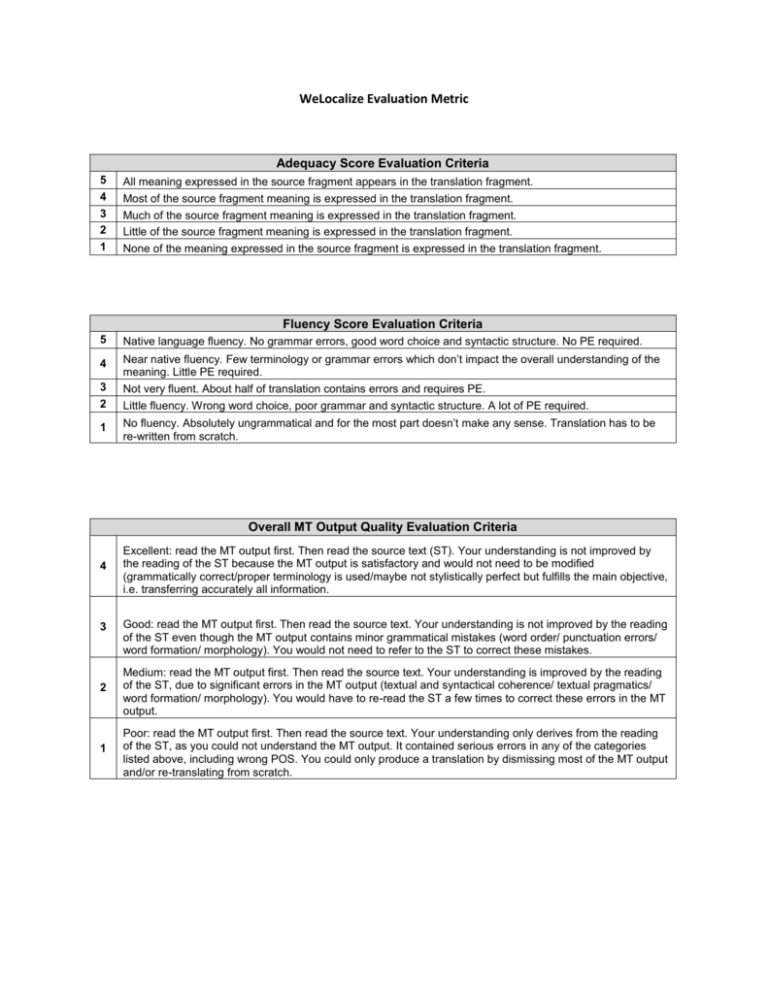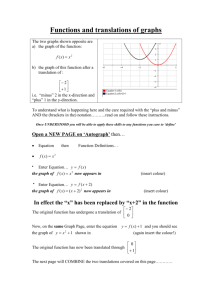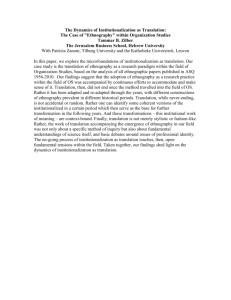WeLocalize Evaluation Metric Adequacy Score Evaluation Criteria 5
advertisement

WeLocalize Evaluation Metric Adequacy Score Evaluation Criteria 5 4 3 2 1 All meaning expressed in the source fragment appears in the translation fragment. Most of the source fragment meaning is expressed in the translation fragment. Much of the source fragment meaning is expressed in the translation fragment. Little of the source fragment meaning is expressed in the translation fragment. None of the meaning expressed in the source fragment is expressed in the translation fragment. 5 Native language fluency. No grammar errors, good word choice and syntactic structure. No PE required. Fluency Score Evaluation Criteria 4 3 2 1 Near native fluency. Few terminology or grammar errors which don’t impact the overall understanding of the meaning. Little PE required. Not very fluent. About half of translation contains errors and requires PE. Little fluency. Wrong word choice, poor grammar and syntactic structure. A lot of PE required. No fluency. Absolutely ungrammatical and for the most part doesn’t make any sense. Translation has to be re-written from scratch. Overall MT Output Quality Evaluation Criteria 4 3 Excellent: read the MT output first. Then read the source text (ST). Your understanding is not improved by the reading of the ST because the MT output is satisfactory and would not need to be modified (grammatically correct/proper terminology is used/maybe not stylistically perfect but fulfills the main objective, i.e. transferring accurately all information. Good: read the MT output first. Then read the source text. Your understanding is not improved by the reading of the ST even though the MT output contains minor grammatical mistakes (word order/ punctuation errors/ word formation/ morphology). You would not need to refer to the ST to correct these mistakes. 2 Medium: read the MT output first. Then read the source text. Your understanding is improved by the reading of the ST, due to significant errors in the MT output (textual and syntactical coherence/ textual pragmatics/ word formation/ morphology). You would have to re-read the ST a few times to correct these errors in the MT output. 1 Poor: read the MT output first. Then read the source text. Your understanding only derives from the reading of the ST, as you could not understand the MT output. It contained serious errors in any of the categories listed above, including wrong POS. You could only produce a translation by dismissing most of the MT output and/or re-translating from scratch. Style and Spelling Wrong terminology The client's glossary is not followed; or wrong translation for a given context Wrong spelling The translated word is misspelled Source not translated/omissions Translatable source words are not translated in the target output or are missing entirely Compliance w/ client specs Client's Style Guide, reference materials and overall "voice" requirements are not followed Literal translation The translation is "word to word" Information/text added The translation contains extra text/information compared to the source Syntax and Grammar Capitalization Capitalization does not follow the target sentence requirements Wrong word form The form of the translated word does not match the context (e.g.: gender, plural / singular, verb inflections,…) Wrong part of speech The parts of speech in the target sentence are assigned incorrectly (i.e. noun translated as verb etc) - this can be correct, so only mark where it is an error Punctuation The punctuation in the target sentence is placed incorrectly, missing or wrong. Sentence structure The word order in the target sentence is incorrect; the target sentence does not follow the target language grammar Tech Tags and Markup Tag placement is incorrect, tag syntax lost/damaged, tag text has been translated. Locale Adaptation Number/date/time/measurement formats; quotation, parenthesis styles etc. not adapted to those of target locale. Spacing Spacing incorrectly maintained/not adapted to locale punctuation norms, i.e. non-breaking spaces before punctuation characters (French).









